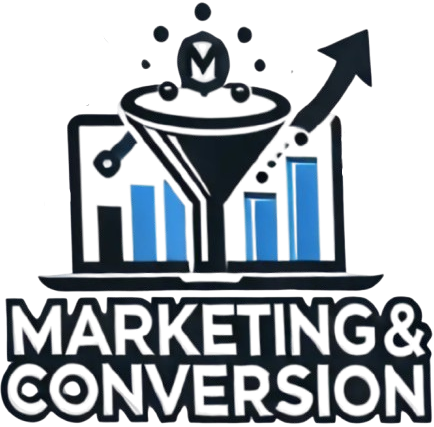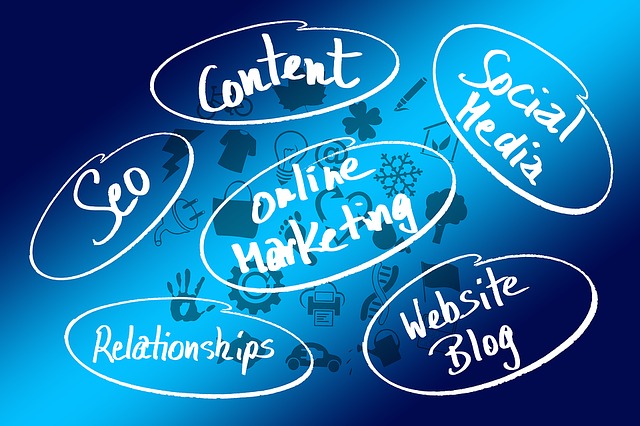
Ecommerce Marketing combines three aspects of everyday life to form a potent tool. It involves the buying and selling of goods and services online, commonly known as online shopping, through web-based stores and mobile applications.
The main focus of ecommerce marketing is to develop and/or increase awareness (as well as website traffic) of one’s online store, products, and services using strategic approaches. It involves employing various advertising techniques to boost the visibility and promotion of a brand, goods, and services. Ecommerce marketing primarily revolves around strategic planning.
Different categories of ecommerce marketing
Social media marketing
Today’s most popular social networks are utilized by brands, publishers, contractors, and growing businesses to establish a presence and share content that resonates with their audience. As an ecommerce marketer, you can adopt a similar approach, but it’s important to note that your campaigns may require some modifications, and not all social networks will be suitable for your specific requirements.
Your success on social media for ecommerce websites relies heavily on using visuals to attract attention and direct traffic to your product pages since these websites are predominantly visual. Instagram is a suitable platform for ecommerce businesses because it allows you to share high-quality product photos and extend the visibility of your products beyond their purchase pages.
You can enhance your social media posts by incorporating shoppable content, which allows visitors to make immediate purchases. This can be achieved by strategically placing display ads in a social feed or adding tags that redirect users to a shopping cart. These techniques facilitate a smoother buying experience by minimizing any obstacles.
Step by step thinking involves rephrasing the text below, while keeping the meaning intact. Do not introduce new information and do not omit any information: The practice of creating and sharing valuable and relevant content as a means of attracting and engaging a target audience is known as content marketing.
If you associate the term “content marketing” with blogging and video marketing, it means creating content that aims to enhance your website’s search engine ranking and provide information about your industry. However, if you have an online product to sell, is it necessary to have articles and videos in order to generate sales? Absolutely. Here are several methods to utilize content for marketing your ecommerce store.
Maximize the effectiveness of your product page content by following a systematic thought process.
To enhance your product pages, optimize them by using concise keywords that are focused on the product and include the product’s name.
If you have a business selling wedding dresses, including the term “brown bridesmaid dress” on your webpage is important. This increases the likelihood of your product pages being displayed in a Google search. Additionally, it is crucial to optimize your page titles, headers, and image alt text by using appropriate keywords. This ensures that search engines recognize your ecommerce store as a relevant result for the specific query.
Compose blog entries that are pertinent
If you operate an online store that sells wedding dresses, creating blog posts about “how to organize a wedding” has the potential to draw in individuals involved in wedding arrangements, regardless of their stage in the planning journey, regardless of their current location.
You can create posts, such as “how to choose the perfect wedding dress,” as visitors become more engaged, and use them to transition into consideration. This can ultimately help convert them into leads by offering a downloadable “wedding planning checklist.”
Generate guest posts for external websites.
By submitting guest posts, you can expose yourself and your products to relevant audiences, often without any cost. Additionally, guest posting will contribute to increasing the domain authority of your ecommerce site, which signals to search engines that your site is trustworthy.
In order to find relevant websites, search for sites that have rankings for keywords related to your product. Occasionally, you may not need to create a complete post. If a site already has a related post, suggest enhancing it with supplementary context such as a video or infographic containing a link to your site.
Place videos related to the product on the YouTube platform in a sequential manner, without omitting or introducing any new information.
Considering that YouTube has more than one billion active users, it is highly likely that your intended audience can be found within this vast user base. Moreover, YouTube is recognized as the second-largest search engine after Google. Therefore, if you aim to reach a large and engaged audience, YouTube is the perfect platform for your endeavors. To maximize your impact, determine the most frequently searched keywords and base your video content on these topics. This way, you can provide valuable and relevant videos that pertain to your product and benefit your target audience.
Tutorial videos that demonstrate how to use your product can also serve as a great option for current customers. These videos enhance customer satisfaction and foster long-term relationships with website visitors by effectively showcasing the optimal usage of your product.
In order to maintain the same meaning of the text below while rephrasing it step by step, you could say: 1. Ensure that your website includes a keyword-driven Frequently Asked Questions (FAQ) section. 2. Incorporate an FAQ section on your website that is driven by keywords. 3. Make sure to have a keyword-focused FAQ section on your website. 4. Include a section on your website specifically dedicated to frequently asked questions driven by keywords. 5. Ensure the presence of an FAQ section on your website, which is centered around relevant keywords.
To ensure that you are the one providing answers, it is important to create an FAQ page on your website, addressing inquiries about your product. This will help drive traffic to your site by meeting the demands of high volume, specific keyword searches. Ultimately, this strategy will establish your credibility and increase visitor influx, contributing to the success of your ecommerce store.
Search engine marketing involves using strategic techniques and tactics to increase a website’s visibility and rankings on search engine results pages.
SEM is a marketing strategy that encompasses search engine optimization (SEO) and paid advertising. SEO focuses on enhancing content using knowledge of Google’s ranking algorithm, while SEM can incorporate pay-per-click (PPC) campaigns, display campaigns, or product-specific ad campaigns (such as Google Shopping). These methods enable you to purchase prominent positions on search engine results pages.
When you use Google’s PPC campaigns, you are ensured that your page will be seen by potential buyers who enter search terms that align with your campaign. However, it is essential to note that since you are being charged by Google for each click on your result, the benefit you receive should be substantial.
Ecommerce marketers frequently sign up with Google AdWords to advertise their product pages via PPC campaigns. These campaigns present searchers with the business’s product immediately when they click on a paid result, enhancing the chances of the searcher completing a purchase before exiting the business’s website.
Rephrased: The practice of promoting products or services through email communication.
Email marketing has been around for a long time and it is still important in ecommerce marketing. The best thing about it is that it can be automated. By automating it, you can create a drip campaign for subscribers based on their interests or where they are in the buyer’s journey and let the email campaign work its magic.
Although you have one less marketing tactic to worry about on your long list of tasks, it is still crucial to be diligent about your email list in order to uphold trust among your leads.
During a time when internet users prioritize data privacy, not all commercial emails are appreciated in their inboxes. Ecommerce marketers must exercise caution in regards to when and how they include website visitors in their mailing list.
There are two methods that an ecommerce marketer can use email marketing for.
1. Follow up after the purchase.
If a user has made a purchase from your website and consented to receiving emails from you at the time of checkout, sending a follow-up email a few days after the product is delivered ensures continued communication and helps assess their potential interest in your product range.
By conducting a post-purchase follow up, you demonstrate your concern for customers beyond making a sale and exhibit your company’s commitment to their success with your product. This allows you to gather feedback on their purchasing journey, thereby aiding you in minimizing obstacles for prospective customers.
When writing this type of email, it is advisable to include a request for the recipient to write a review of your product. Additionally, you can suggest that they explore the original content available on how to use your product, with the YouTube videos you have created serving as an ideal resource.
2. The shopping cart that was left behind
Emails can make a significant impact on whether users who abandon their shopping carts end up making a purchase or become lost customers, as there are various reasons why users abandon their carts. These emails aim to identify the issue and encourage customers to continue their business.
Below, we will discuss methods to decrease shopping cart abandonment. In the event that a visitor on your website fails to finalize a transaction while in their shopping cart, you may want to contemplate sending a courteous email as a reminder to complete the checkout process. In this email, you can also offer assistance or suggest other relevant products in order to regain their attention and redirect their browser back to your ecommerce store.
requires careful planning and execution to be effective. The process includes identifying relevant influencers, developing a strategy, and implementing campaigns that align with the brand’s objectives. By leveraging the influencers’ authority and credibility, brands can effectively reach their target audience and build trust. However, it is crucial to continuously monitor and evaluate the performance of influencer marketing efforts to ensure maximum impact and return on investment.
Influencer marketing pertains to individuals or brands who have an impact on your desired consumer group. This phrase is often used to describe Instagram profiles with a sizable number of followers, although it may also encompass a famous person or a community that your target audience follows or belongs to.
Influencers have the ability to establish communities of individuals who are familiar with, enjoy, and have faith in them. Consequently, they can effortlessly generate attention for your online product by promoting it through a recommendation or a “sponsored post.”
Affiliate marketing is a process that involves thinking in a step-by-step manner while maintaining the same meaning. No new information should be added, and no information should be removed.
A total of 81% of brands utilize affiliate marketing, specifically favoring ecommerce sites. Affiliates, which can be individuals or businesses, assist in selling your product online in exchange for a commission.
In contrast to the majority of social media influencers, affiliates employ traditional (yet proven) marketing strategies to generate interest in products. They frequently utilize paid advertising, content marketing, and various other methods to direct traffic towards your product pages, essentially acting as a marketing team on your behalf.
This response will guide you through rephrasing the text step by step: 1. Marketing at a small-scale and specific target area. 2. Implementing marketing strategies within the local community. 3. Focusing on promoting products or services within a limited geographic region. 4. Employing marketing techniques that cater to the needs and preferences of the local consumer base. 5. Tailoring marketing efforts to appeal to the particular characteristics of the local market. 6. Utilizing advertising and promotional tactics that target a local audience. 7. Directing marketing campaigns towards capturing the attention and engagement of individuals in the immediate vicinity.
Local marketing is a frequently ignored strategy for ecommerce businesses. However, it enables you to focus more on the regions where the majority of your potential customers are located, especially if there is a substantial population in one area. Additionally, it offers opportunities to provide incentives to your potential customer base.
First, use tracking cookies to ascertain the locations of your potential customers. Subsequently, extend an offer of discounted (or complimentary) shipping to individuals in regions where your warehouses or shipping facilities exist. This stimulating incentive could be precisely what you require to acquire a fresh clientele.
Strategies for ecommerce marketing?
Engage customers with email marketing
Email marketing has been around for a long time and is considered one of the oldest forms of digital marketing. However, despite its age, it continues to be effective and produce results. This is mainly due to its personalized nature and the convenience of automation, making it user-friendly.
Before gaining access to someone’s email, they must have been registered with your business. As a marketer, automation and drip campaigns have simplified your work in promoting your business.
Capitalize on Search Engine Marketing (SEM) and Search Engine Optimization (SEO)
Originally, Search Engine Optimization is expected to fall solely under the umbrella of Search Engine Marketing. However, it has evolved into a highly influential tool within the realm of Ecommerce. Search Engine Marketing includes both SEO and paid advertising.
SEO is the strategic use of keywords and content optimization to create organic, unpaid traffic. It is just generally meticulous content development (like blog posts) that makes one’s website easier to find. Strategically stringing words according to the most searched for words and phrases while conveying relevant and meaningful content.
Paid ads play a dominant role in Ecommerce marketing as part of SEM. Various marketing plans and platforms exist to support these advertisements. In this context, we predominantly focus on social media marketing and PPC campaigns. Social media marketing involves utilizing social networks for content promotion.
There are social media platforms such as Twitter, Instagram, Facebook, and others, which enable this activity. In the case of PPC campaigns, they involve the creation of ads and finding suitable websites to display these ads. Whenever someone clicks on an ad, they will be directed to your website. Consequently, you are obliged to compensate the owner of the website that hosted the ad.
Google Adwords is the preferred platform for running PPC ads, as it ensures that your site appears when relevant keywords are entered.
Leverage market affiliation / Affiliate marketing
Affiliate marketing occurs when a different website includes links to your own in relation to a post they have created. Given that Ecommerce marketing operates on a pay-to-play basis, it is likely that you will need to make a payment. This method proves highly effective for Ecommerce marketing.
For example, if someone who uses a smartphone searches for the top restaurants to hold a dinner event, as a seller of dinner gowns, you will not be providing the services or products that they are looking for.
Imagine that you are associated with the person who created a compilation called Best Restaurants for Dinner Events. While browsing through available restaurants, it is highly probable that the viewer’s attention would be drawn towards a compilation of Stunning Dinner Dresses. Next, they are redirected from the initial page to your page showcasing your products.


